1. The Seychelles Creates Two New Marine Protected Areas
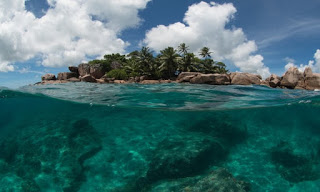 The Seychelles will create two huge marine protected areas in exchange for a write-off of a big chunk of its national debt. “The novel financial engineering, effectively swapping debt for dolphins and other marine life, aims to throw a lifeline to corals, tuna and turtles being caught up in a storm of overfishing and climate change,” writes The Guardian. Created with the help of The Nature Conservancy, the deal will protect a Scotland-sized area around the Aldabra archipelago, “which rivals the Galapagos in ecological importance.” The second MPA, around the nation’s main island of Mahe, allows some fishing but bans fish-aggregating devices. “With other ocean nations lining up to follow, the approach could transform large swaths of the planet’s troubled seas.”
The Seychelles will create two huge marine protected areas in exchange for a write-off of a big chunk of its national debt. “The novel financial engineering, effectively swapping debt for dolphins and other marine life, aims to throw a lifeline to corals, tuna and turtles being caught up in a storm of overfishing and climate change,” writes The Guardian. Created with the help of The Nature Conservancy, the deal will protect a Scotland-sized area around the Aldabra archipelago, “which rivals the Galapagos in ecological importance.” The second MPA, around the nation’s main island of Mahe, allows some fishing but bans fish-aggregating devices. “With other ocean nations lining up to follow, the approach could transform large swaths of the planet’s troubled seas.”Read More…
—————————————————
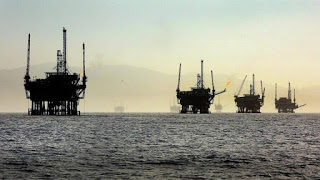 U.S. Secretary of the Interior Zinke met with California Governor Jerry Brown this week and told him that the Trump administration would “listen to California’s objections” about its proposal to expand offshore oil and natural gas drilling along its coast. In January Secretary Zinke announced plans to open to oil exploration along nearly all protected U.S. coastlines, including in Alaska, the Atlantic seaboard, and the Pacific coast. Zinke exempted Florida from the plans after hearing objections from Republican governor Rick Scott.
U.S. Secretary of the Interior Zinke met with California Governor Jerry Brown this week and told him that the Trump administration would “listen to California’s objections” about its proposal to expand offshore oil and natural gas drilling along its coast. In January Secretary Zinke announced plans to open to oil exploration along nearly all protected U.S. coastlines, including in Alaska, the Atlantic seaboard, and the Pacific coast. Zinke exempted Florida from the plans after hearing objections from Republican governor Rick Scott. Read More…
—————————————————
3. Trouble in Paradise
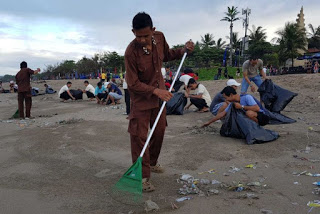 It’s “garbage season” in Bali as tons of garbage washes up each day on the beaches of the island’s popular tourist areas. Hotel workers and volunteers try to clean the beaches each morning before the tourists wake up, but the trash is clearly bad news for the island’s tourism industry. While some of the trash comes from Bali, much of it comes from other Indonesian islands like Java and Sumatra. “Indonesia is one of the world’s worst contributors of plastic pollution into the ocean, with an estimated 200,000 tonnes of plastic washing into the ocean — 16 per cent of the global total, according to a study published in the journal Nature Communications.” A year ago the nation pledged $1 billion annually to tackle its plastic pollution problem.
It’s “garbage season” in Bali as tons of garbage washes up each day on the beaches of the island’s popular tourist areas. Hotel workers and volunteers try to clean the beaches each morning before the tourists wake up, but the trash is clearly bad news for the island’s tourism industry. While some of the trash comes from Bali, much of it comes from other Indonesian islands like Java and Sumatra. “Indonesia is one of the world’s worst contributors of plastic pollution into the ocean, with an estimated 200,000 tonnes of plastic washing into the ocean — 16 per cent of the global total, according to a study published in the journal Nature Communications.” A year ago the nation pledged $1 billion annually to tackle its plastic pollution problem.
Read More
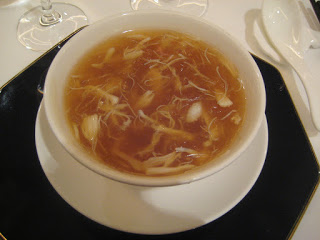 Consumption of shark fin soup in China has fallen by about 80% since 2011. But it’s too soon for ocean conservationists to celebrate. Shark fin soup remains on the menu in Hong Kong and Taiwan, and consumption is growing in places like Thailand, Vietnam, Indonesia, and Macau. “Today, about 100 million sharks are killed every year, with parts of 73 million ending up in soup, WildAid estimates. A quarter of shark and ray species are threatened with extinction, according to the International Union for the Conservation of Nature, including species like the great hammerhead.”
Consumption of shark fin soup in China has fallen by about 80% since 2011. But it’s too soon for ocean conservationists to celebrate. Shark fin soup remains on the menu in Hong Kong and Taiwan, and consumption is growing in places like Thailand, Vietnam, Indonesia, and Macau. “Today, about 100 million sharks are killed every year, with parts of 73 million ending up in soup, WildAid estimates. A quarter of shark and ray species are threatened with extinction, according to the International Union for the Conservation of Nature, including species like the great hammerhead.”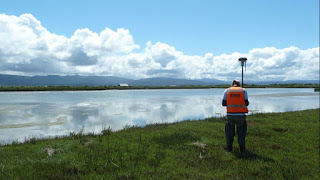 A new study led by the U.S. Geological Survey warns that California’s salt marshes could disappear by 2110 due to sea-level rise. “We’re essentially drowning the marshes,” says Glen MacDonald, one of the study authors. Development along the coast—and the steep cliffs along much of California’s coastline—mean that marshes would have nowhere to migrate. That’s bad news for Californians: Salt marshes reduce flooding, filter pollutants, and provide a unique habitat for fish and shorebirds.
A new study led by the U.S. Geological Survey warns that California’s salt marshes could disappear by 2110 due to sea-level rise. “We’re essentially drowning the marshes,” says Glen MacDonald, one of the study authors. Development along the coast—and the steep cliffs along much of California’s coastline—mean that marshes would have nowhere to migrate. That’s bad news for Californians: Salt marshes reduce flooding, filter pollutants, and provide a unique habitat for fish and shorebirds.Read More…
—————————————————
6. “Chameleon” Ocean Bacteria Can Shift Their Colors
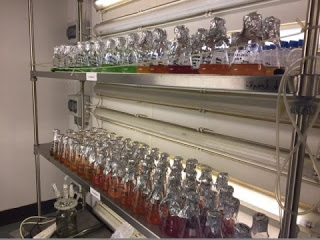 A new study finds that cyanobacteria can change color to match the ocean light. These microorganisms, which convert sunlight into food for the ocean’s food chain, contain abundant “chromatic adaptor” genes. This ability allows them to thrive in different parts of the ocean, from the blue of the deep ocean to greener coastal waters. This research, says David Scanlan of the University of Warwick, “will allow us to better predict how oceans will react in the future to a changing climate.”
A new study finds that cyanobacteria can change color to match the ocean light. These microorganisms, which convert sunlight into food for the ocean’s food chain, contain abundant “chromatic adaptor” genes. This ability allows them to thrive in different parts of the ocean, from the blue of the deep ocean to greener coastal waters. This research, says David Scanlan of the University of Warwick, “will allow us to better predict how oceans will react in the future to a changing climate.” Read More…
—————————————————
Sea Save Foundation is committed to raising awareness of marine conservation. The Week in Review is a team effort produced by the Sea Save staff to provide a weekly summary of the latest in marine research, policy, and news.




